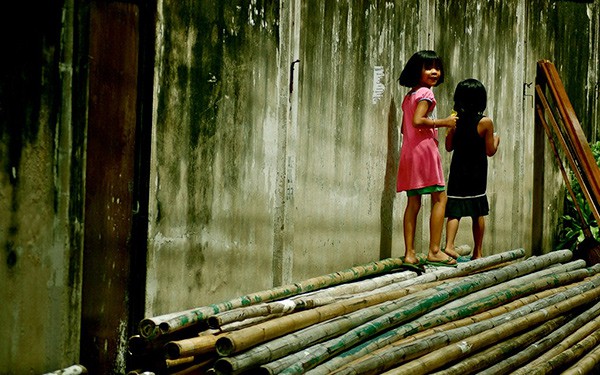“Sixty Baht,” the shopkeeper casually remarked as she quickly shifted her attention away from the two bottles of drinks my cousin held up to a group of foreigners surveying her line of elephant carvings at the other side of the shop.
My cousin was dumbstruck. Sixty baht for a small bottle of water and a bottle of juice. We were in Ayutthaya at the time, checking out the temples. Perhaps drinks were just more expensive here, she thought. It was a well-known tourist hub after all. She returned the juice and replaced it with another bottle of water.
“Nee tao rai ka?”
The shopkeeper’s eyes widened as she apologized profusely to her teenage customer. Apparently she thought my cousin was a Chinese tourist.
It’s not the first time she’s been told she looked didn’t look like a pure Thai or a Thai at all. Some of them were right: my cousin’s not pure Thai. She is actually the product of two Southeast Asians: a Thai and a Filipino.
Short in stature, with tanned skin and slightly droopy eyes, she has the usual traits of a person born within the region. She shares the same physical characteristics as a Filipino, Malaysian, Singaporean, Cambodian, Indonesian and people from other nearby nations. Theoretically, she shouldn’t have trouble blending in. Yet without saying a word, people already know she’s ‘a half’. Some have speculated that she’s a Chinese tourist, a half Korean or an Indonesian.
Standing just a few inches taller, I actually look like my cousin’s older knockoff. I am not Thai by any means but oddly enough, locals don’t see me as a foreigner. As long as I don’t say a word, most Thais think I am just one of the locals. It’s not my looks that gives me away but my inability to speak in Thai fluently that does.
“Poot Thai mai dai ka.”
In a country where your looks can determine how much you pay for products and services, looking Thai enough comes in handy. When it comes to traveling with relatives around the country, I have learned to keep my lips zipped. Let our Thai kin do all of the talking. Saves the family hundreds of baht just on entrance fees alone.
Here, Thai shopkeepers expect foreign tourists to have deeper pockets. From souvenirs, clothes, drinks to entrance fees, foreigners are charged several times more than a local.
The peculiar situation involving me and my cousin makes me wonder. If my cousin and I have the same physical traits, why do some assume that I’m Thai yet think that my cousin is half? Are there specific Asian characteristics that make a person look more Thai than others?
It’s a difficult question to answer. Thainess, even in the physical sense, is subjective and changes with time.
Walking through the streets of Bangkok, skin tones can range from a slightly yellow tinge to a brownish tan. In certain provinces down South, there are tribes with people who have kinky hair and darker skin tones. Eye shapes come in a greater variety. Some have deep-set eyes, almond-shaped ones or thin slits. Asians typically have flat noses although there are also Thais now with slender noses and more prominent bridges. I’m not referring to Thais who have undergone plastic surgery.
I had once asked my cousins which celebrities they would consider as having Thai features. When it came to the older generation of celebrities, there is the married couple Chatchai and Sinjai Plengpanich, and Lalita Panyopas from the movie Ploy. These more seasoned, older actors and actresses often had dark brown skin tones, almond-shaped eyes with wider or flatter noses.
Among the younger celebrities however, my cousins couldn’t name any that would fit the bill. The trend is going towards having more Western features. Almost all are known or believed to be half Thais. If their foreign surnames did not give them away, their fair complexions and slender noses surely did.
With more tourists coming in every year and Thais marrying people from other races, perhaps it is already becoming impossible to define what it really means to look Thai. Like Filipinos, maybe there is no such thing as being pure Thai anymore and we’re all just mixes of different cultures. In time, maybe we’ll no longer use physical traits to identify a race but just as a marker of where we were born.
Featured image is by Sam Sherratt (CC BY-SA 2.0 licence)


